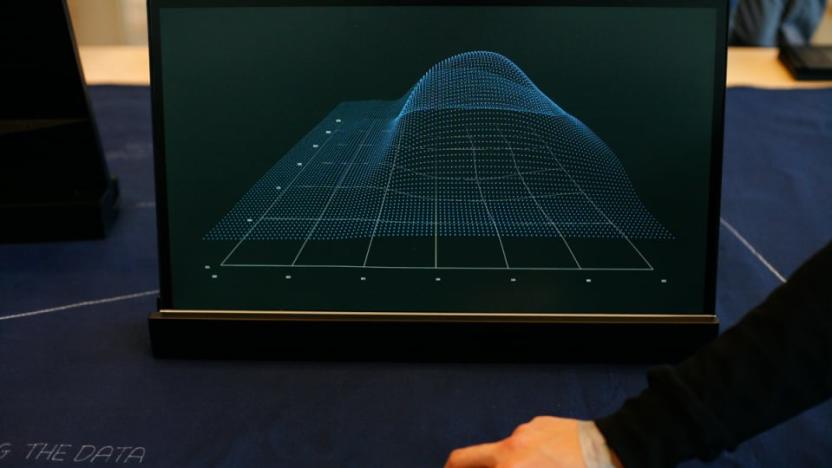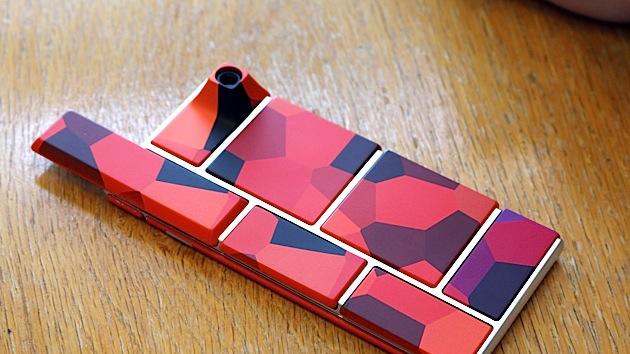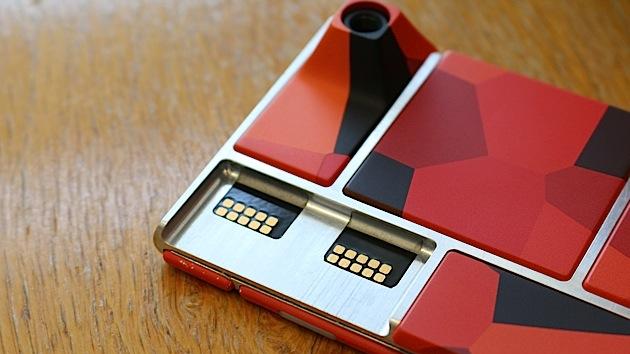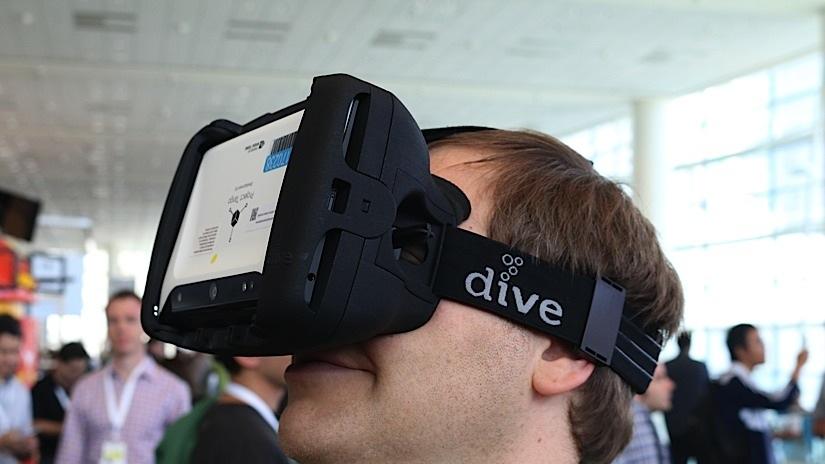atap
Latest

Google's Project Vault secures your devices with a microSD card
Hackers are getting more brazen and passwords are becoming huge of a pain as we keep signing up for services. Password managers help ease the pain of dealing with security over multiple sites and services, but for the most part, our computing lives are open to anyone with even marginal hacking skills. Google thinks it can fix that with Project Vault, a secure device that plugs into any system both desktop or mobile that supports microSD. The device runs its own ultra-secure operating system that's partitioned from the rest of the host device with 4GB of storage for your most sensitive data.

Google's Project Soli to bring gesture control to wearables
Gesture-based system are usually attached to video game consoles like the Microsoft Kinect or your computer like the Leap Motion. Google's ATAP team figured that the smaller form factor of the smartwatch segment needed its own finger-waving way to control the devices without having to reply on the smartphone. It's Project Soli replaces the physical controls of smartwatches with your hands using radar to capture your movements.

Google's first partner for smart, sensor-laden clothes is Levi's
Remember when we said yesterday that Google's Project Jacquard would lead to the advent of touch-friendly pants? Well, we were more right than we thought: During the Google ATAP address here at Google I/O 2015, Technical Program Lead Ivan Poupyrev confirmed that the search giant is teaming up with Levi's to help bridge the gap between Jacquard's technically complex fabrics and the seemingly arcane world of fashion. "We think about Jacquard as a raw material that will make computation a part of the language which apparel designers and textile designers and fashion designers speak," he said. "We want digital to be just the same thing as quality of yarn or colors used," referring to how fundamental these sorts of connected considerations should be.

Google's Project Jacquard wants to put a trackpad on your pants
The ATAP division of Google is known for some the most innovative ideas to come out of Silicon Valley. It's the home of the Project Ara modular phone and Project Tango. So it's no surprise to find that Project Jacquard has a large single piece of fabric with conductive yarn woven in that works like a trackpad. The Jacquard team said that more information about its technology would be revealed at tomorrow's ATAP session, but it already looks promising.

Google slashes price of Project Tango 3D-mapping tablet
Google's 3D spatial mapping tablet Project Tango is currently only available for purchase by invitation. Today some of those lucky individuals received an email informing them that the price of the tablet was being slashed by 50 percent from $1024 to $512. The email forwarded to Android Police also mentions that Google is "opening sales more broadly," and that this was the last chance for the individual to purchase the device reserved for them. Before you assume "more broadly" means you'll be able to buy one of those tablets in the near future, it seems like it's going to be a developer-only device for at least a little while longer. A Google spokesperson told Engadget, "we are opening sales more broadly because we want to broaden the reach to encourage more developers to join us on this journey." Google might be a tad bit gun shy about opening up devices like Project Tango to the general public after what happened with Google Glass.

Swapping smartphone modules with Google's latest Project Ara prototype
Google's modular phone concept is one step closer to reality. With today's announcement of the latest updates to Project Ara and an upcoming pilot program in Puerto Rico, Google has made serious strides in bringing the unique swappable-module phone idea to market. Today, we had a chance to take a look at the latest version of the concept -- code-named Spiral 2 -- and it's certainly a much more polished version of the device than we've seen previously. Indeed, Paul Eremenko, Project Ara's lead, says that the look of the hardware here is "final," or at least very close to what we'll see come final release.

Watch Google's Project Ara modular phone conference right here
Want to know what Google and partners are cooking up for the next wave of Project Ara, their initiative to develop modular smartphones? You have an easy way to find out: Google is streaming its Project Ara conference live. The Mountain View event is bound to include a few treats, whether it's more advanced (or at least cheaper) prototypes, new modules and other updates. Tune in below and you might just learn about the future of mobile technology before your friends.

Five questions for the creator of Google's modular smartphone
It's been just over a year since Google's Advanced Technology and Projects (ATAP) division announced Project Ara, a full-scale effort to produce the world's very first modular smartphone. The team has been working hard and fast to get a unit on the market before the end of its two-year mission, and it's progressing quite nicely: We recently saw a functional "Spiral 1" prototype running on Android, and the next version -- "Spiral 2" -- should be getting into developers' hands later this year. Paul Eremenko, who heads up the Ara team, will be onstage at Engadget Expand with me for a live demonstration and fireside chat. We'll catch up on how things are progressing, how Ara has evolved since its inception, the most interesting use cases for a modular smartphone he's seen so far and also discuss the next Developer Conference, scheduled for January 14th, 2015, in Mountain View, California. In anticipation of his appearance at Expand, I reached out to Eremenko for a quick Q&A about Ara.

Project Ara team shows a working modular phone
You'd be forgiven for being skeptical of Google's Project Ara -- for all the prototypes and partnerships, actually spotting a working unit has been a gigantic challenge. You won't have to jump through hoops to see one after today, thankfully. The engineering team at NK Labs has shown Phonebloks a real, honest-to-goodness functioning test phone that boots into Android. It's using an old Jelly Bean release instead of the promised Android Lollipop build, and the demo doesn't include a significant amount of functionality, but hey -- progress!

Google's modular phone gets cheaper thanks to a new processor
One of the biggest challenges behind Google's modular Project Ara phone platform has been getting processors to play nicely with the technology. How do you let someone swap out the very heart of their device as easily as they would a memory card? By creating a CPU for that very purpose, that's how. Rockchip has started work on a system-on-chip with modular tech built-in; your phone won't need any bridge chips or other special tricks to let you switch processors on a whim. You won't see the hardware in action until a Rockchip-based Ara prototype arrives in early 2015. However, the plans show that Google's vision of a completely upgradable handset is both feasible and potentially inexpensive. Don't be surprised if some of the earliest Ara phones (or rather, their parts) easily fit within your budget.

Project Tango tablet teardown reveals its custom 3D mapping gear
If you've been wondering just what parts let Google's Project Tango tablet work its 3D mapping magic, iFixit is more than happy to show you. The DIY repair outlet has torn down the experimental Android slate to reveal a truly unique sensor array. While it resembles a Kinect at first, Google notes that it had Mantis Vision build a custom infrared projector (which bathes the world in a light grid) that works in tandem with the 4-megapixel IR camera; there's no way you'd replace either with off-the-shelf parts. The big, dual-cell 2,480mAh battery was also made to order, since the ATAP team wanted to let developers draw as much power as necessary for their 3D-savvy apps. The Tango tablet is undoubtedly a very clever design, then, but you'll have to handle it with kid gloves if you ever try it -- you probably won't get another one if it breaks.

Google prepares modular phone dev kits (but your idea had better be good)
If you're a developer eager to start tinkering with Google's Project Ara modular phone technology as quickly as possible, it's time to get in line. The company has started taking requests for test boards; if you fill out the form before July 18th and meet Google's expectations, you could have (very) early hardware in your hands before the end of the month. Latecomers can get in on a second wave if they sign up no later than August 18th. Just don't assume that you can pick up a kit purely out of curiosity. Google is prioritizing the board requests based on your know-how and the "strength" of your proposed module concept -- it wants signs that there's a real device in the works. You'll have to sit tight if you're simply a fan of the build-your-own-phone concept, then, but it's apparent that Project Ara is quickly becoming a tangible reality.

Two years to Tango: the race to finish Google's 3D-mapping tablet
Speck Design's clientele has ranged from Apple to Samsonite to Fisher-Price in its history, and now it can add Google to the list of high-profile companies. But Google -- or its Advanced Technologies and Projects (ATAP) division, to be more specific -- is no ordinary client. The group is modeled after DARPA, which divides its agency into teams, with each one given a limited time to solve a pressing issue. Nearly a year and half ago, ATAP reached out to Speck, led by industrial designers Jason Stone and Vincent Pascual, with one such task: Build a tablet like no other. The project is known as Tango. Its goal is to create technology that lets you use mobile devices to piece together three-dimensional maps, thanks to a clever array of cameras, depth sensors and fancy algorithms. As if that isn't enough of a challenge, Tango's team only has two full years to make this tech a reality. Those two years will be up in less than five months.

Swim with the fishes using Project Tango and a head-mounted display
For a few minutes, I saw the Moscone Center -- and everyone inside it -- under water. Sharks and small fish even swam past me as if I wasn't there. And then, all of a sudden, I stood up straight and discovered that I'd poked my head above the waves. This experience, which is a virtual fish tank developed by 360World, was made possible by Google's Project Tango tablet and the Durovis Dive 7, an Oculus Rift-like contraption. It utilizes Tango's cameras, motion detectors and sensors to give you a sense that you are floating around with the fishes -- no snorkel or SCUBA gear required, of course.

LG partners with Google's Project Tango to make consumer product next year
Google's Advanced Technology and Projects division has been hard at work on its 3D-mapping project, known as Tango, since early 2013. In this time, we've seen the team rapidly progress its efforts by introducing a smartphone and tablet specifically for developers to construct their own apps that take advantage of the cameras and sensors inside. That said, we weren't expecting to hear about a consumer-facing Tango product for quite a while, so it came as a surprise when Google announced that it's working with LG on a device that will be available to the public sometime next year. There were no details about whether this product will be a smartphone, tablet or neither, but the partnership is likely still in the early stages.

Here's how Google's modular phone will get its 3D-printed parts
Google's modular Project Ara smartphone is all about customization, but that creates a challenge: how are manufacturers supposed to build so many uncommon (and possibly unique) parts? The crew at 3D Systems is more than happy to tell you -- it just outlined the 3D printing techniques it's using to make Ara a reality. The company is dropping the conventional printing process, which bogs down due to frequent changes in speed, in favor of a continuously moving system that's fast enough to cope with mass production. The technique should generate "millions" of parts, even when some components need special treatment.

Toshiba's vision for Project Ara extends to wearables and beyond
Project Ara is primarily focused on building a modular smartphone in the hopes of changing the industry, but is that the only type of mobile device on the drawing board? Absolutely not. An executive at Toshiba, one of Google's partners on the project, just revealed that his company's vision of the concept goes beyond smartphones. Shardul Kazi, Senior VP and Technology Executive at Toshiba, posited that devices like smartwatches (and beyond, he says) could also take advantage of Ara's blocky component modules, which allow you to mix and match whatever features and components you want to have.

Project Tango teardown reveals the wonders of the phone's 3D sensing tech
Want to get a better understanding of Google's 3D-sensing Project Tango smartphone beyond the usual promo videos? iFixit is more than happy to show you now that it has torn down the device for itself. The close-up identifies many of the depth mapping components in the experimental handset, including the infrared and fisheye cameras (both made by OmniVision), motion tracking (from InvenSense) and dual vision processors (from Movidius).

Google's Project Ara wants to revolutionize the smartphone industry within a year
The night before Google's Advanced Technology and Projects (ATAP) division was supposed to show off the one and only functional Project Ara prototype to a room full of eager developers, someone dropped the phone and broke the display. At any other product reveal, this worst-case scenario would be a nightmare come true. Not to Google: The company made lemonade out of a lemon by turning it into a selling point for the modular smartphone. A year from now, painful situations like this might be easily fixed by simply buying a new display and swapping out the broken one. Not that it would've made much of a difference if last night's fiasco never happened. Attendees at this week's Project Ara developer conference wouldn't have been able to boot up the prototype and play around with it like any typical smartphone -- in this case, "functional" is not the same as "functioning" -- but at least it would've made for a better presentation. Regardless of how it looked, however, we were able to briefly handle the Project Ara prototype and some of its first modules. To be clear, this is an extremely early model and there's a long way to go before it sees the light of day, but it at least allows us to get a good glimpse of what's to come over the next year as Ara continues to prepare for launch.

Here's another peek at Google's build-your-own-smartphone project
Project Ara has only exploded in prominence since Google unloaded Motorola earlier this year, and now we're getting yet another peek at the work in progress. The Phonebloks team just released a video showing off the progress Google and its partners have made on those modular smartphones, and things are coming along just as quick as you'd expect.



